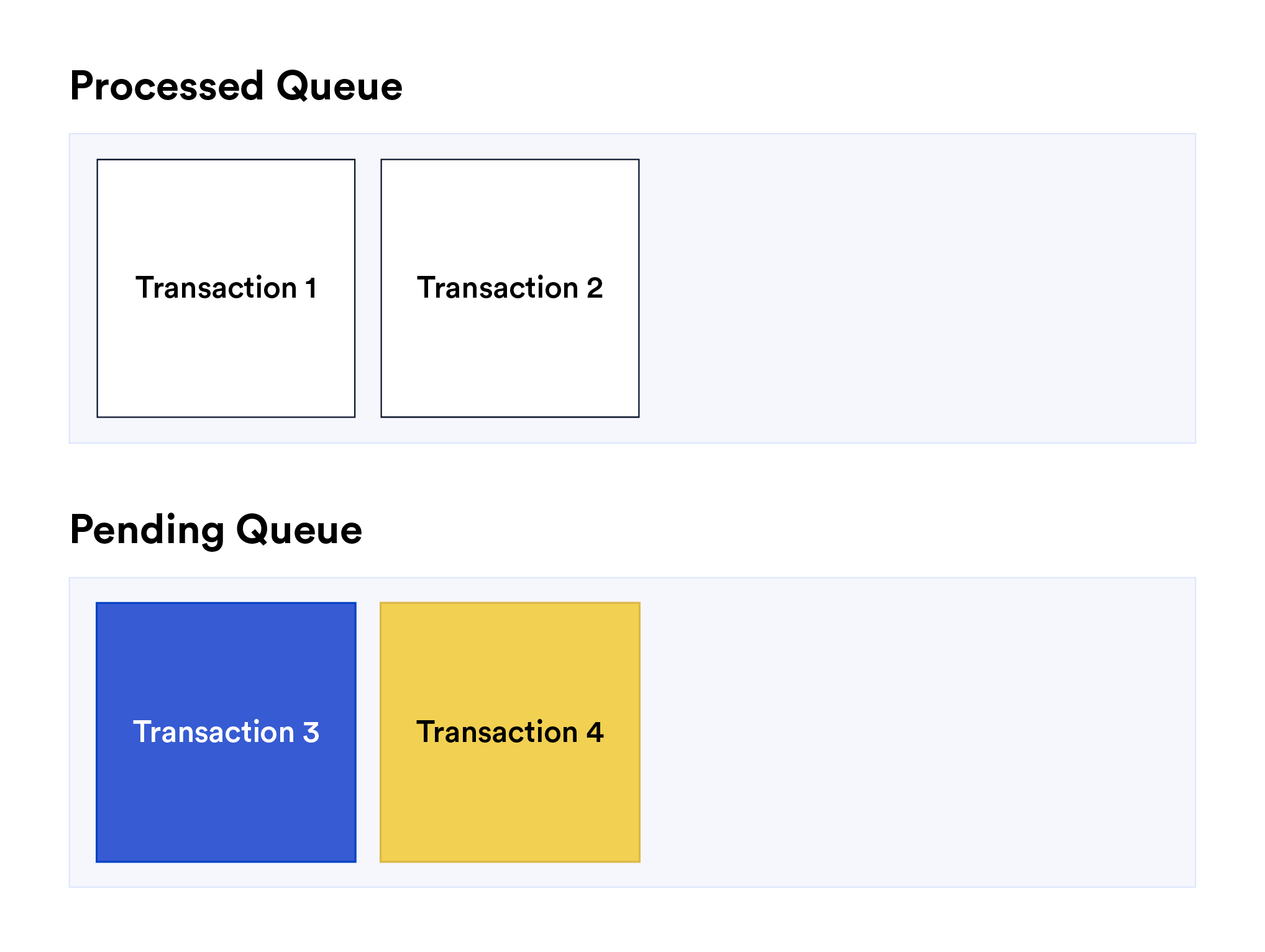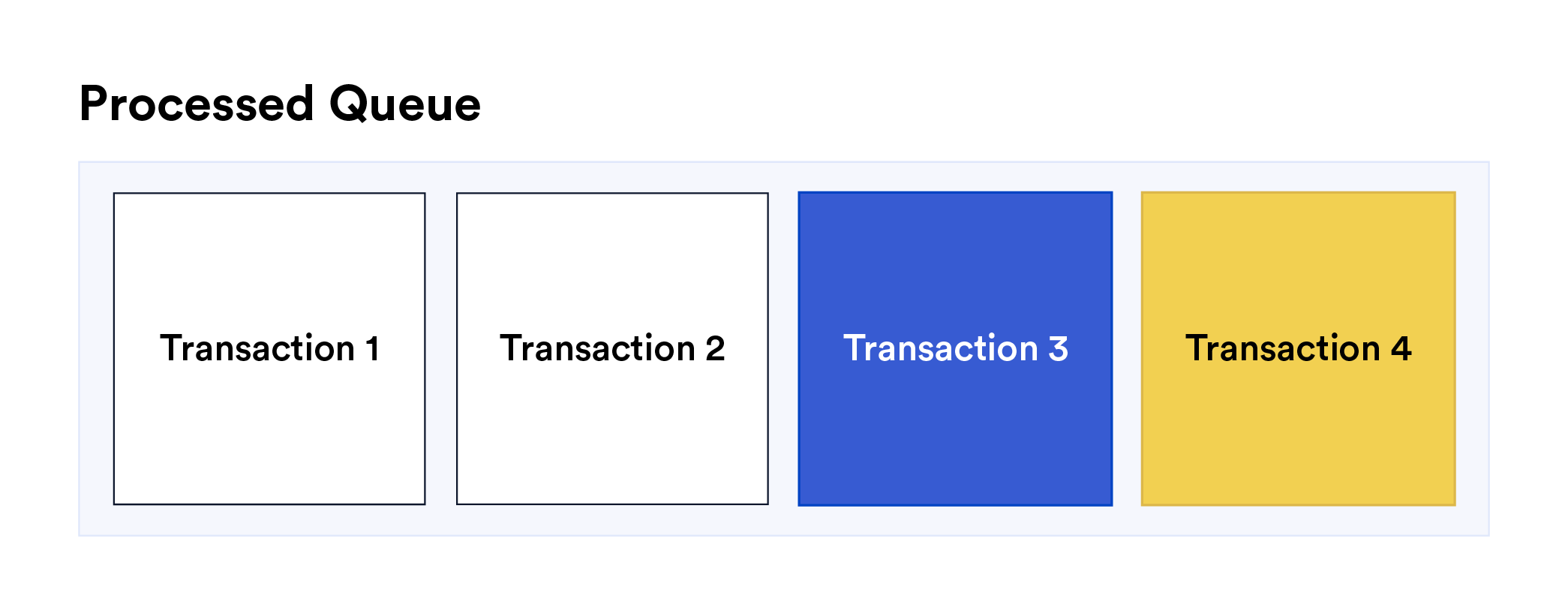L2 Sequencer Uptime Feeds
Optimistic rollup protocols move all execution off the layer 1 (L1) Ethereum chain, complete execution on a layer 2 (L2) chain, and return the results of the L2 execution back to the L1. These protocols have a sequencer that executes and rolls up the L2 transactions by batching multiple transactions into a single transaction.
If a sequencer becomes unavailable, it is impossible to access read/write APIs that consumers are using and applications on the L2 network will be down for most users without interacting directly through the L1 optimistic rollup contracts. The L2 has not stopped, but it would be unfair to continue providing service on your applications when only a few users can use them.
To help your applications identify when the sequencer is unavailable, you can use a data feed that tracks the last known status of the sequencer at a given point in time. This helps you prevent mass liquidations by providing a grace period to allow customers to react to such an event.
Available networks
You can find proxy addresses for the L2 sequencer feeds at the following addresses:
- Arbitrum:
- Arbitrum mainnet: 0xFdB631F5EE196F0ed6FAa767959853A9F217697D
- Arbitrum Goerli testnet: 0x4da69F028a5790fCCAfe81a75C0D24f46ceCDd69
- Optimism:
- Optimism mainnet: 0x371EAD81c9102C9BF4874A9075FFFf170F2Ee389
- Optimism Goerli testnet: 0x4C4814aa04433e0FB31310379a4D6946D5e1D353
- Metis:
- Andromeda mainnet: 0x58218ea7422255EBE94e56b504035a784b7AA204
Arbitrum
The diagram below shows how these feeds update and how a consumer retrieves the status of the Arbitrum sequencer.

- Chainlink nodes trigger an OCR round every 30s and update the sequencer status by calling the
validatefunction in theArbitrumValidatorcontract by calling it through theValidatorProxycontract. - The
ArbitrumValidatorchecks to see if the latest update is different from the previous update. If it detects a difference, it places a message in the Arbitrum inbox contract. - The inbox contract sends the message to the
ArbitrumSequencerUptimeFeedcontract. The message calls theupdateStatusfunction in theArbitrumSequencerUptimeFeedcontract and updates the latest sequencer status to 0 if the sequencer is up and 1 if it is down. It also records the block timestamp to indicate when the message was sent from the L1 network. - A consumer contract on the L2 network can read these values from the
ArbitrumUptimeFeedProxycontract, which reads values from theArbitrumSequencerUptimeFeedcontract.
Handling Arbitrum outages
If the Arbitrum network becomes unavailable, the ArbitrumValidator contract continues to send messages to the L2 network through the delayed inbox on L1. This message stays there until the sequencer is back up again. When the sequencer comes back online after downtime, it processes all transactions from the delayed inbox before it accepts new transactions. The message that signals when the sequencer is down will be processed before any new messages with transactions that require the sequencer to be operational.
Optimism and Metis
On Optimism and Metis, the sequencer’s status is relayed from L1 to L2 where the consumer can retrieve it.

On the L1 network:
-
A network of node operators runs the external adapter to post the latest sequencer status to the
AggregatorProxycontract and relays the status to theAggregatorcontract. TheAggregatorcontract calls thevalidatefunction in theOptimismValidatorcontract. -
The
OptimismValidatorcontract calls thesendMessagefunction in theL1CrossDomainMessengercontract. This message contains instructions to call theupdateStatus(bool status, uint64 timestamp)function in the sequencer uptime feed deployed on the L2 network. -
The
L1CrossDomainMessengercontract calls theenqueuefunction to enqueue a new message to theCanonicalTransactionChain. -
The
Sequencerprocesses the transaction enqueued in theCanonicalTransactionChaincontract to send it to the L2 contract.
On the L2 network:
-
The
Sequencerposts the message to theL2CrossDomainMessengercontract. -
The
L2CrossDomainMessengercontract relays the message to theOptimismSequencerUptimeFeedcontract. -
The message relayed by the
L2CrossDomainMessengercontains instructions to callupdateStatusin theOptimismSequencerUptimeFeedcontract. -
Consumers can then read from the
AggregatorProxycontract, which fetches the latest round data from theOptimismSequencerUptimeFeedcontract.
Handling outages on Optimism and Metis
If the sequencer is down, messages cannot be transmitted from L1 to L2 and no L2 transactions are executed. Instead, messages are enqueued in the CanonicalTransactionChain on L1 and only processed in the order they arrived later when the sequencer comes back up. As long as the message from the validator on L1 is already enqueued in the CTC, the flag on the sequencer uptime feed on L2 will be guaranteed to be flipped prior to any subsequent transactions. The transaction that flips the flag on the uptime feed will be executed before transactions that were enqueued after it. This is further explained in the diagrams below.
When the Sequencer is down, all L2 transactions sent from the L1 network wait in the pending queue.
- Transaction 3 contains Chainlink’s transaction to set the status of the sequencer as being down on L2.
- Transaction 4 is a transaction made by a consumer that is dependent on the sequencer status.

After the sequencer comes back up, it moves all transactions in the pending queue to the processed queue.
- Transactions are processed in the order they arrived so Transaction 3 is processed before Transaction 4.
- Because Transaction 3 happens before Transaction 4, Transaction 4 will read the status of the Sequencer as being down and responds accordingly.

Example code
This example code works on the Arbitrum, Optimism, and Metis networks. Create the consumer contract for sequencer uptime feeds similarly to the contracts that you use for other Chainlink Data Feeds. Configure the constructor using the following variables:
- Configure the
sequencerUptimeFeedobject with the sequencer uptime feed proxy address for your L2 network. - Configure the
dataFeedobject with one of the Data Feed proxy addresses that are available for your network.
// SPDX-License-Identifier: MIT
pragma solidity ^0.8.7;
import "@chainlink/contracts/src/v0.8/interfaces/AggregatorV2V3Interface.sol";
/**
* THIS IS AN EXAMPLE CONTRACT THAT USES HARDCODED VALUES FOR CLARITY.
* THIS IS AN EXAMPLE CONTRACT THAT USES UN-AUDITED CODE.
* DO NOT USE THIS CODE IN PRODUCTION.
*/
contract DataConsumerWithSequencerCheck {
AggregatorV2V3Interface internal dataFeed;
AggregatorV2V3Interface internal sequencerUptimeFeed;
uint256 private constant GRACE_PERIOD_TIME = 3600;
error SequencerDown();
error GracePeriodNotOver();
/**
* Network: Optimism Goerli testnet
* Data Feed: BTC/USD
* Data Feed address: 0xC16679B963CeB52089aD2d95312A5b85E318e9d2
* Uptime Feed address: 0x4C4814aa04433e0FB31310379a4D6946D5e1D353
* For a list of available Sequencer Uptime Feed proxy addresses, see:
* https://docs.chain.link/docs/data-feeds/l2-sequencer-feeds
*/
constructor() {
dataFeed = AggregatorV2V3Interface(
0xC16679B963CeB52089aD2d95312A5b85E318e9d2
);
sequencerUptimeFeed = AggregatorV2V3Interface(
0x4C4814aa04433e0FB31310379a4D6946D5e1D353
);
}
// Check the sequencer status and return the latest data
function getLatestData() public view returns (int) {
// prettier-ignore
(
/*uint80 roundID*/,
int256 answer,
uint256 startedAt,
/*uint256 updatedAt*/,
/*uint80 answeredInRound*/
) = sequencerUptimeFeed.latestRoundData();
// Answer == 0: Sequencer is up
// Answer == 1: Sequencer is down
bool isSequencerUp = answer == 0;
if (!isSequencerUp) {
revert SequencerDown();
}
// Make sure the grace period has passed after the
// sequencer is back up.
uint256 timeSinceUp = block.timestamp - startedAt;
if (timeSinceUp <= GRACE_PERIOD_TIME) {
revert GracePeriodNotOver();
}
// prettier-ignore
(
/*uint80 roundID*/,
int data,
/*uint startedAt*/,
/*uint timeStamp*/,
/*uint80 answeredInRound*/
) = dataFeed.latestRoundData();
return data;
}
}
The sequencerUptimeFeed object returns the following values:
answer: A variable with a value of either1or0- 0: The sequencer is up
- 1: The sequencer is down
startedAt: This timestamp indicates when the sequencer changed status. This timestamp returns0if a round is invalid. When the sequencer comes back up after an outage, wait for theGRACE_PERIOD_TIMEto pass before accepting answers from the data feed. SubtractstartedAtfromblock.timestampand revert the request if the result is less than theGRACE_PERIOD_TIME.
If the sequencer is up and the GRACE_PERIOD_TIME has passed, the function retrieves the latest answer from the data feed using the dataFeed object.